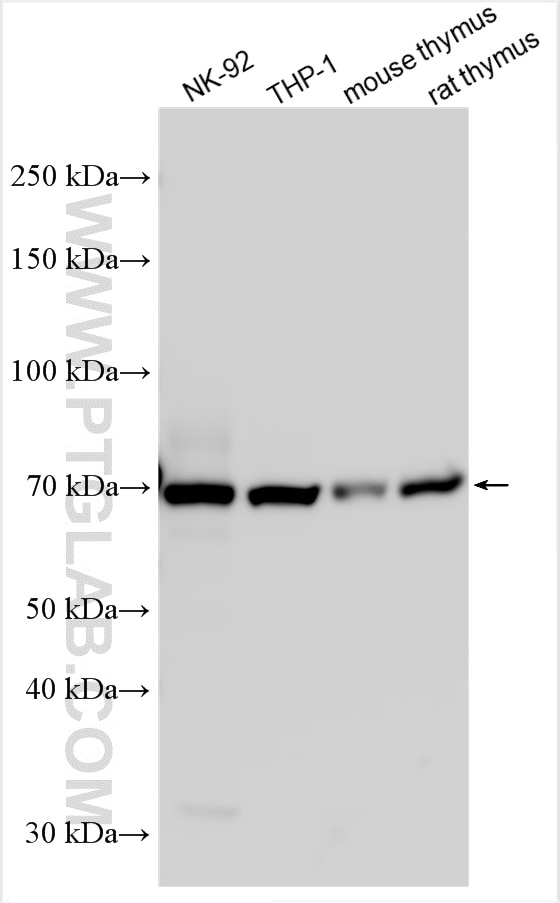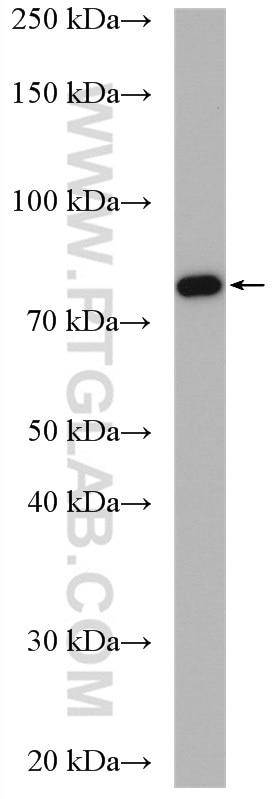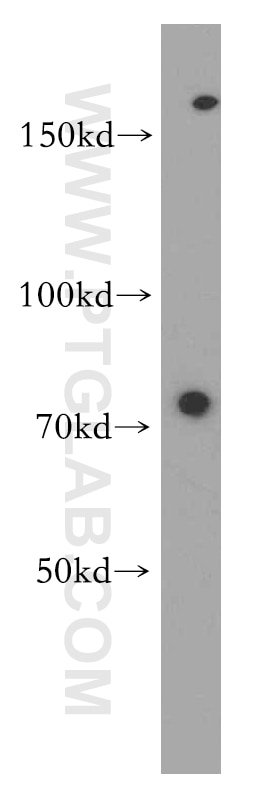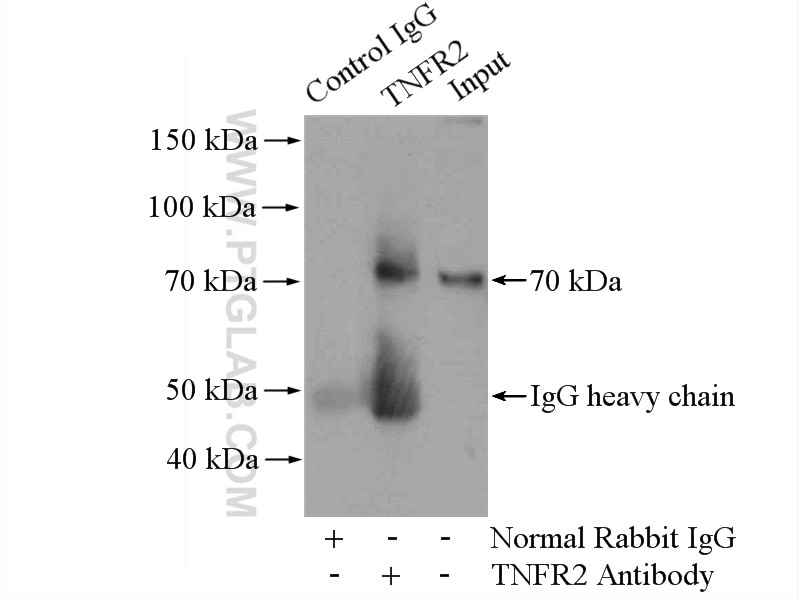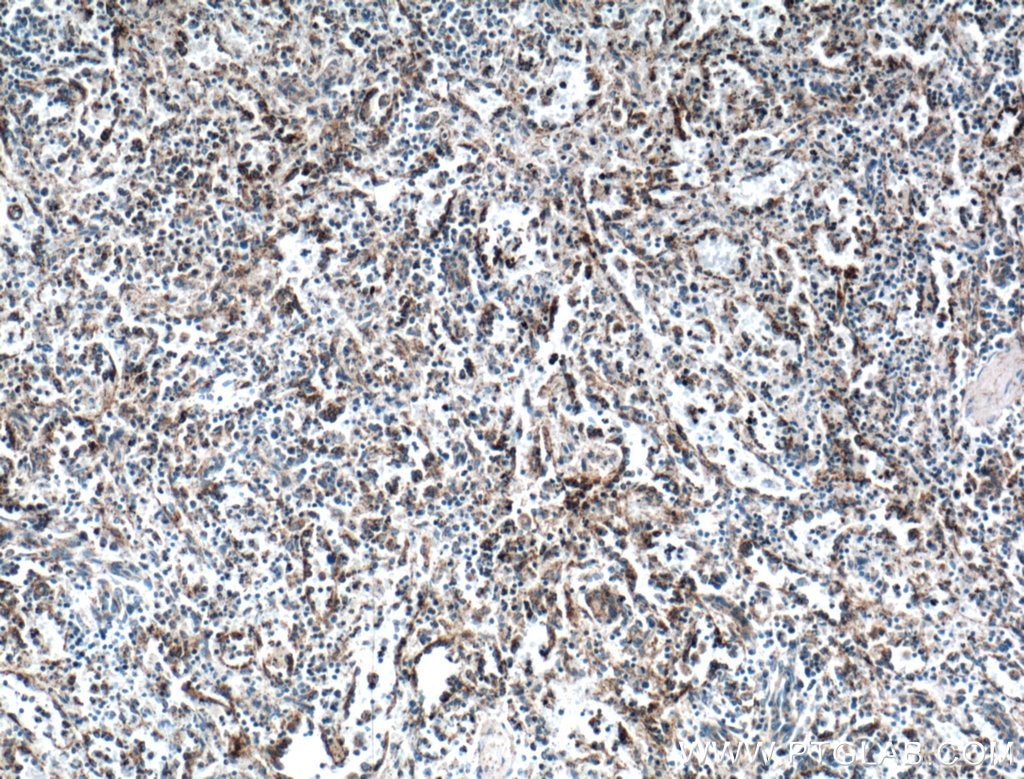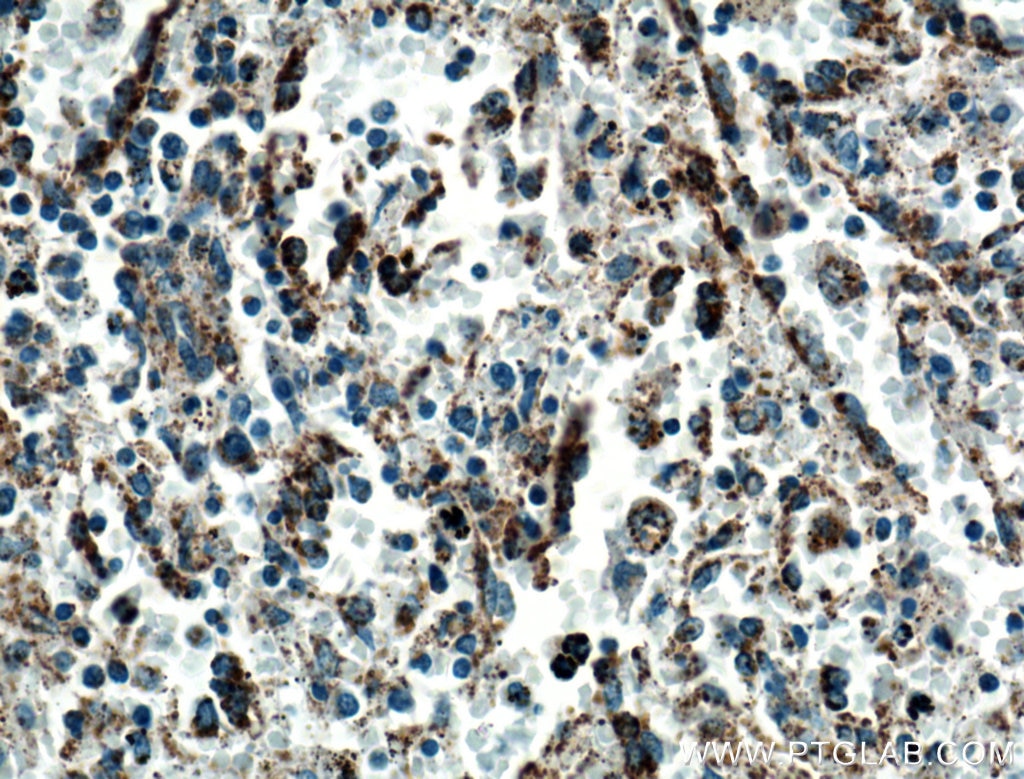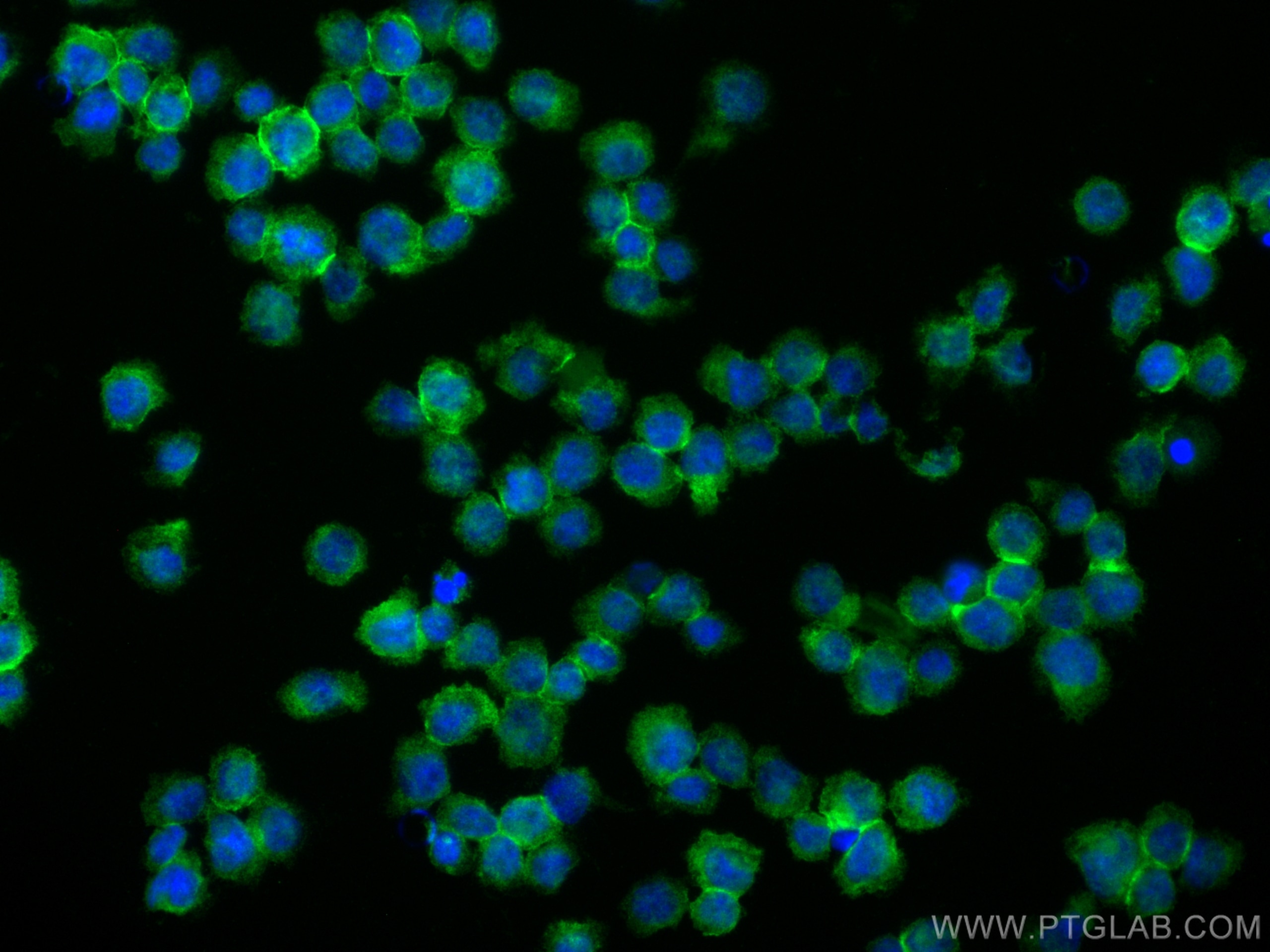Tested Applications
| Positive WB detected in | NK-92 cells, Jurkat cells, HEK-293 cells, THP-1 cells, mouse thymus tissue, rat thymus tissue |
| Positive IP detected in | HEK-293 cells |
| Positive IHC detected in | human spleen tissue Note: suggested antigen retrieval with TE buffer pH 9.0; (*) Alternatively, antigen retrieval may be performed with citrate buffer pH 6.0 |
| Positive IF/ICC detected in | THP-1 cells |
Recommended dilution
| Application | Dilution |
|---|---|
| Western Blot (WB) | WB : 1:500-1:1000 |
| Immunoprecipitation (IP) | IP : 0.5-4.0 ug for 1.0-3.0 mg of total protein lysate |
| Immunohistochemistry (IHC) | IHC : 1:50-1:500 |
| Immunofluorescence (IF)/ICC | IF/ICC : 1:50-1:500 |
| It is recommended that this reagent should be titrated in each testing system to obtain optimal results. | |
| Sample-dependent, Check data in validation data gallery. | |
Product Information
19272-1-AP targets TNFR2 / TNFRSF1B in WB, IHC, IF/ICC, IP, CoIP, ELISA applications and shows reactivity with human, mouse, rat samples.
| Tested Reactivity | human, mouse, rat |
| Cited Reactivity | human, mouse, rat |
| Host / Isotype | Rabbit / IgG |
| Class | Polyclonal |
| Type | Antibody |
| Immunogen | TNFR2 / TNFRSF1B fusion protein Ag5866 Predict reactive species |
| Full Name | tumor necrosis factor receptor superfamily, member 1B |
| Calculated Molecular Weight | 48 kDa |
| Observed Molecular Weight | 70-75 kDa |
| GenBank Accession Number | BC052977 |
| Gene Symbol | TNFR2 |
| Gene ID (NCBI) | 7133 |
| RRID | AB_10640674 |
| Conjugate | Unconjugated |
| Form | Liquid |
| Purification Method | Antigen affinity purification |
| UNIPROT ID | P20333 |
| Storage Buffer | PBS with 0.02% sodium azide and 50% glycerol , pH 7.3 |
| Storage Conditions | Store at -20°C. Stable for one year after shipment. Aliquoting is unnecessary for -20oC storage. 20ul sizes contain 0.1% BSA. |
Background Information
Tumor necrosis factor-alpha (TNFA/TNFSF2) is a multifunctional cytokine that plays a key role in regulating inflammation, immune functions, host defense, and apoptosis (PMID: 16407280). TNFA signals through two distinct cell surface receptors, TNFR1 (TNFRSF1A, CD120a, p55) and TNFR2 (TNFRSF1B, CD120b, p75). TNFR1 is widely expressed, whereas TNFR2 exhibits more restricted expression, being found on CD4 and CD8 T lymphocytes, endothelial cells, microglia, oligodendrocytes, neuron subtypes, cardiac myocytes, thymocytes and human mesenchymal stem cells (PMID: 20489699; 22374304). In contrast to TNFR1, TNFR2 does not have a death domain. TNFR2 only signals for antiapoptotic reactions. However, recent evidence indicates that TNFR2 also signals to induce TRAF2 degradation (PMID: 22374304). Various defects in the TNFR2 pathway, due to polymorphisms in the TNFR2 gene, upregulated expression of TNFR2 and TNFR2 shedding, have been implicated in the pathology of several autoimmune disorders (PMID: 20489699).
Protocols
| Product Specific Protocols | |
|---|---|
| WB protocol for TNFR2 / TNFRSF1B antibody 19272-1-AP | Download protocol |
| IHC protocol for TNFR2 / TNFRSF1B antibody 19272-1-AP | Download protocol |
| IF protocol for TNFR2 / TNFRSF1B antibody 19272-1-AP | Download protocol |
| IP protocol for TNFR2 / TNFRSF1B antibody 19272-1-AP | Download protocol |
| Standard Protocols | |
|---|---|
| Click here to view our Standard Protocols |
Publications
| Species | Application | Title |
|---|---|---|
Nat Immunol NKILA lncRNA promotes tumor immune evasion by sensitizing T cells to activation-induced cell death. | ||
Mol Ther Tumor necrosis factor alpha delivers exogenous inflammation-related microRNAs to recipient cells with functional targeting capabilities. | ||
Mater Today Bio Intracellular hydrogelation of macrophage conjugated probiotics for hitchhiking delivery and combined treatment of colitis | ||
Oxid Med Cell Longev Protective Effects of Cinnamaldehyde against Mesenteric Ischemia-Reperfusion-Induced Lung and Liver Injuries in Rats. | ||
Cancer Lett Up-regulation of OLR1 expression by TBC1D3 through activation of TNFα/NF-κB pathway promotes the migration of human breast cancer cells. | ||
Pain Nox2-dependent signaling between macrophages and sensory neurons contributes to neuropathic pain hypersensitivity. |
Reviews
The reviews below have been submitted by verified Proteintech customers who received an incentive for providing their feedback.
FH Tinne (Verified Customer) (08-14-2023) | This worked really well for ICC of human HPCs.
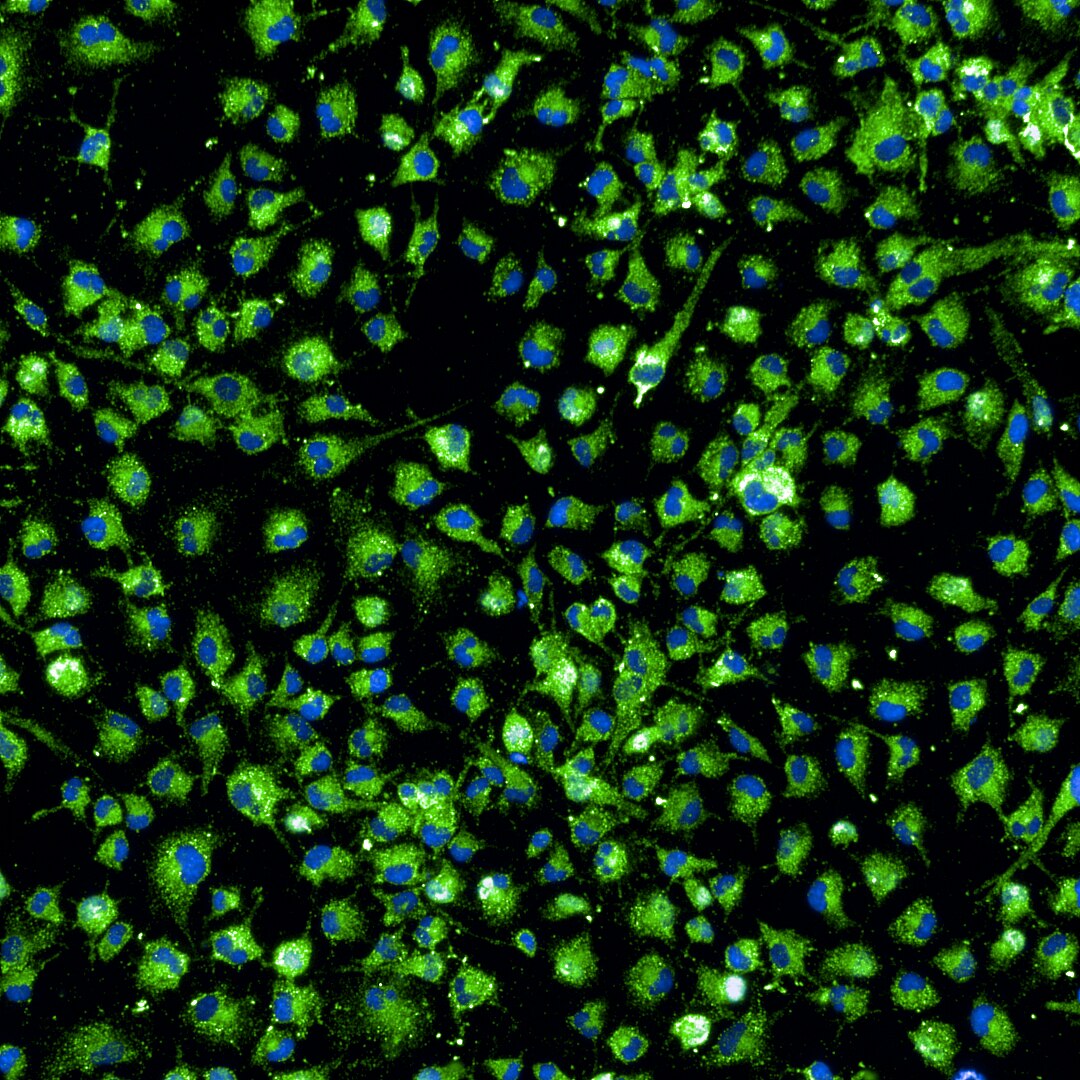 |
